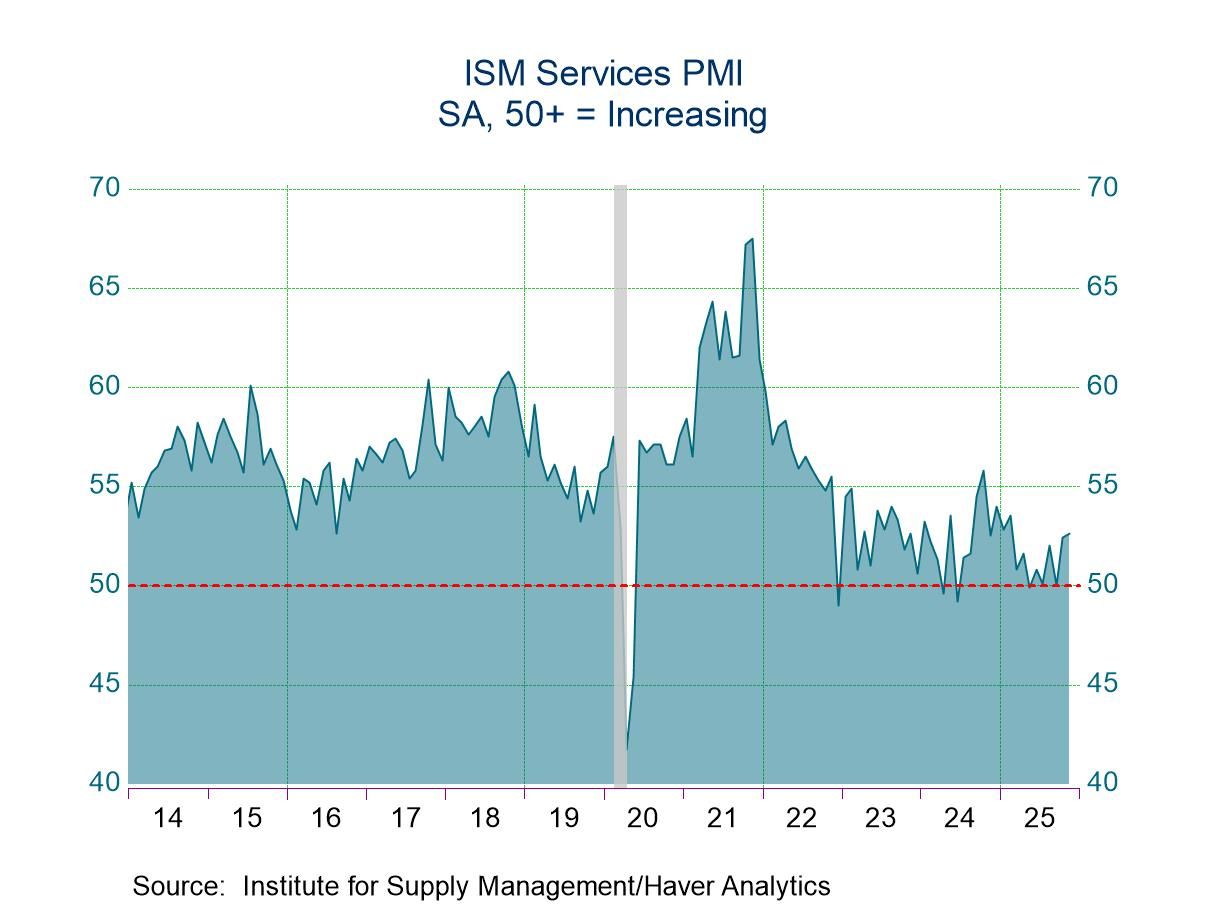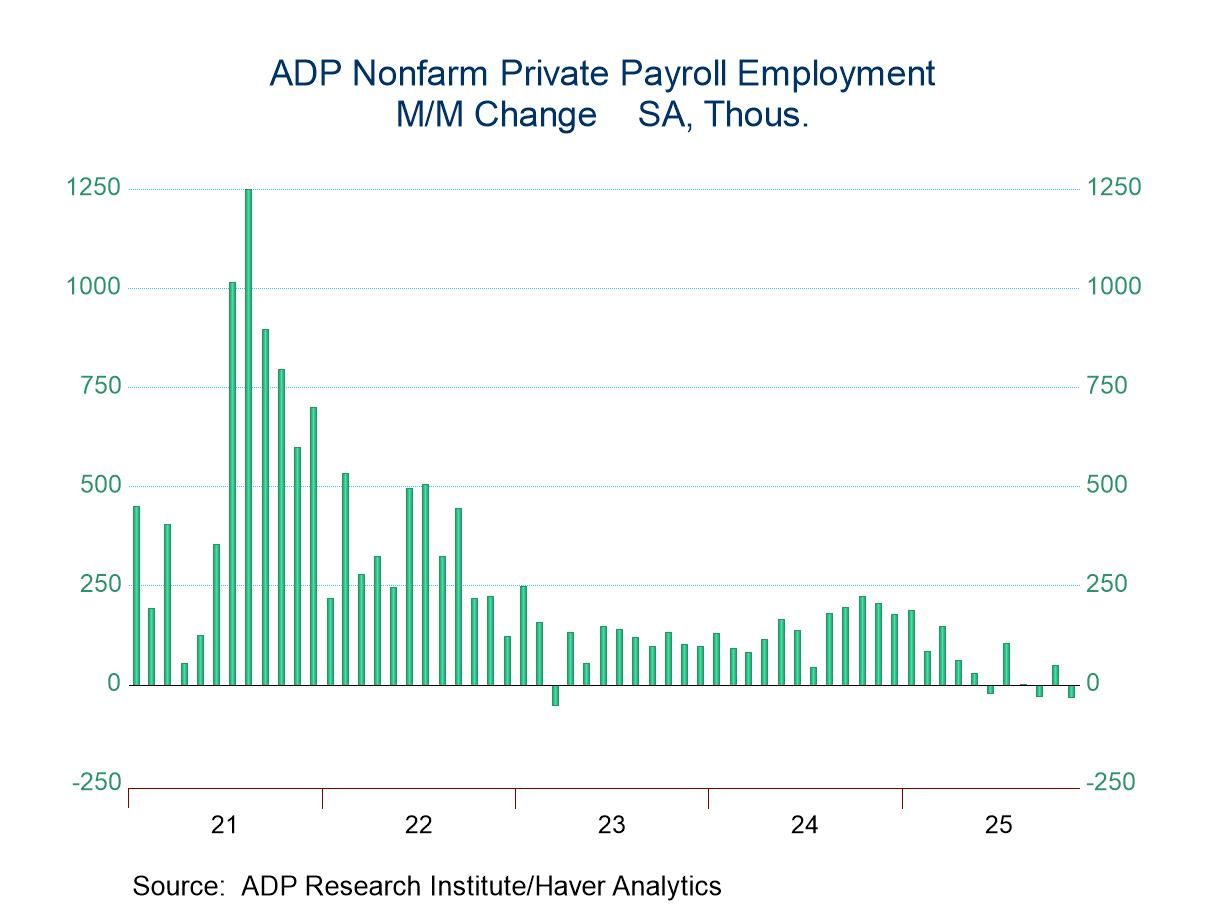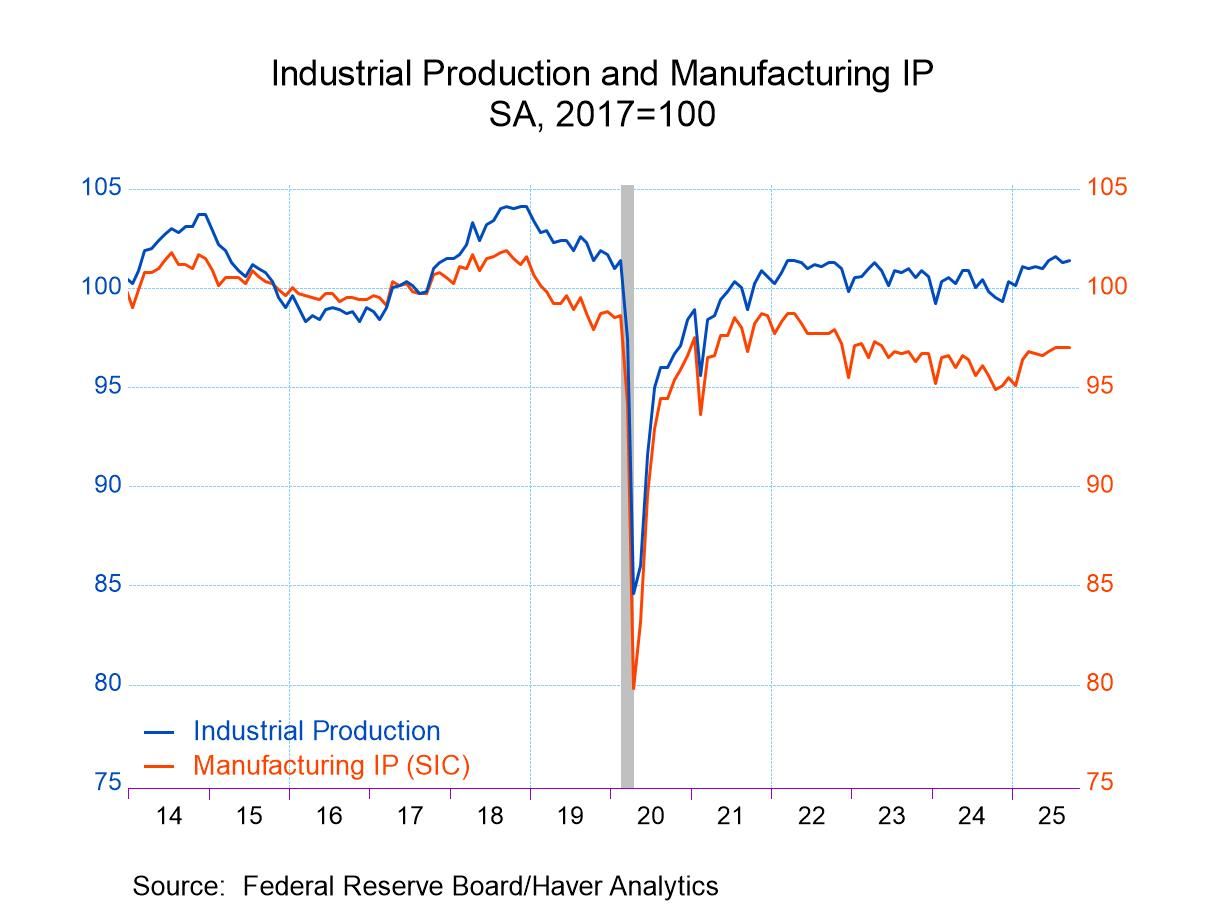EMU Sentiment Indicators from EU Commission Show Easing

The EU Commission indexes for June 2025 shows erosion in the overall index to a level of 94 compared to 94.8 in May. The readings for France have become particularly weak in the last two months. As shown in the chart, it is apparent that the reading for France has fallen quite sharply during this period. France has posted index declines of 3.7% in consecutive months; these are quite large declines. The cumulative two-month drop for France has been larger less than 5% of the time back to 2015; Romania and Denmark (EU Member) also has experienced relatively sharp drops in the last two months. While Portugal and Belgium have experienced top 5% to 7% increases in the last two months. Germany has generally improved although it backed off in the current month. The euro area reading has been in a state of minor erosion; Italy is currently in a several month phase of having bounced back from a period of weakness. All-in-all it has not been a particularly good period for the European monetary union or in its large economies with the exception of Germany.
Sector performance The five sector or environmental readings that we have for the Monetary Union show erosion on the month for three of five of the readings. Improving month-to-month is the services sector which moved to a reading of +3 in June from +2 in May. The construction sector moved to a reading of -3 in June from -4 in May; however, eroding is the reading for retailing that fell to -8 from -7 in May; consumer confidence edged lower to -15.3 from -15.1 in May; and the industrial sector reading fell to -12 from -10 in May. The improvement is in the cyclical and small employment sector of construction but also in the major employment sector of services. Meanwhile the all-important manufacturing or industrial sector has eroded on the month and this is the sector we are focused on - and concerned about - particularly with tariffs in flux.
Rankings or standings by industry As of June, the overall European monetary union index has a 23.5 percentile standing on data since about 1990 while the industrial sector standing is in its 16th percentile, consumer confidence in its 18th percentile, and services standing in their 24th percentile. Retailing has a 46.4 percentile standing that moves it up closer to its median for the period (median readings on ranked data occur at a ranking of 50%). So, retailing is getting closer to a median performance while construction is above its median with a standing in its 77.5 percentile.

Country level readings Among the 18 early reporting European monetary union member countries, nine of them showed month-to-month declines in June; this compares to 10 declining in May, and eleven of them declining in April. That is a slightly positive but not exactly impressive trend. Perhaps more worrisome, is that three of the four largest monetary union economies showed declines in June compared to two in May and one in April. Among these 18 reporting economies in June, none of them was showing a consistent increase over the last three months; however, consistent declines were reported by Estonia and Greece, two relatively small economies.
Rank standings for countries The rank standings for the monetary union countries individually show the large countries with mixed performance. The monetary union overall standing is at 23.5%. Germany at 17.1% and France at 15.9% shows both are below the community ranking. However, Italy at 41% and Spain at 46.6% are above the community standing. Turning to the other member countries, there are only four with readings above their 50th percentile; those are Malta, Portugal, Lithuania, and Greece. Among these other economies, those whose standings are weaker than the overall standing for the monetary union includes Austria, Estonia, and Slovakia. The performance of the large economies appears to have a large influence on the rankings of the community overall.

Large economies continue to spot weak reading across sectors
Hard times for Europe Of course, this is a time with a lot of difficulty as well as political forces coming to bear in Europe. Hot war in the Middle East broke out and has a since been contained although I'm sure that many people are going to view this ceasefire with some skepticism until it proves itself to be enduring. There was a recent NATO meeting that will change the face of Europe as NATO members - apparently all of them except Spain - have agreed to spend 5% of GDP bolstering their military. This is a very significant development especially with the war in Ukraine continuing and Russia seeming like it has no interest in giving peace anything other than lip service possibly to gain temporary advantages from a ceasefire. The success of Israel with support from the U.S. in the Middle East war has upset the balance of power there where the newfound respect for the capabilities of Israel is changing the face of diplomacy there.
Summing up: tariffs dominate the outlook The U.S. continues to have its tariff negotiations in train. After Spain refused to spend 5% of GDP as part of its NATO pledge, President Trump has promised to double or triple tariffs on Spain to make them more than pay for the money they think they're saving in military spending. Interestingly, more and more analysts seem to be accepting the view that tariffs are going to be used as a more generalized club and not just as a tool within international trade. Very clearly there has been a shift in the global environment and the way people view it. And we are going to have to continue to watch and wait to see how the tariff situation shakes out and what its impact is going to be on various economies, on their industrial sectors, and on their service sectors, and whether the U.S. is able to create a set of agreements that doesn't degenerate into an all-out bilateral trade wars.
Robert Brusca
AuthorMore in Author Profile »Robert A. Brusca is Chief Economist of Fact and Opinion Economics, a consulting firm he founded in Manhattan. He has been an economist on Wall Street for over 25 years. He has visited central banking and large institutional clients in over 30 countries in his career as an economist. Mr. Brusca was a Divisional Research Chief at the Federal Reserve Bank of NY (Chief of the International Financial markets Division), a Fed Watcher at Irving Trust and Chief Economist at Nikko Securities International. He is widely quoted and appears in various media. Mr. Brusca holds an MA and Ph.D. in economics from Michigan State University and a BA in Economics from the University of Michigan. His research pursues his strong interests in non aligned policy economics as well as international economics. FAO Economics’ research targets investors to assist them in making better investment decisions in stocks, bonds and in a variety of international assets. The company does not manage money and has no conflicts in giving economic advice.






